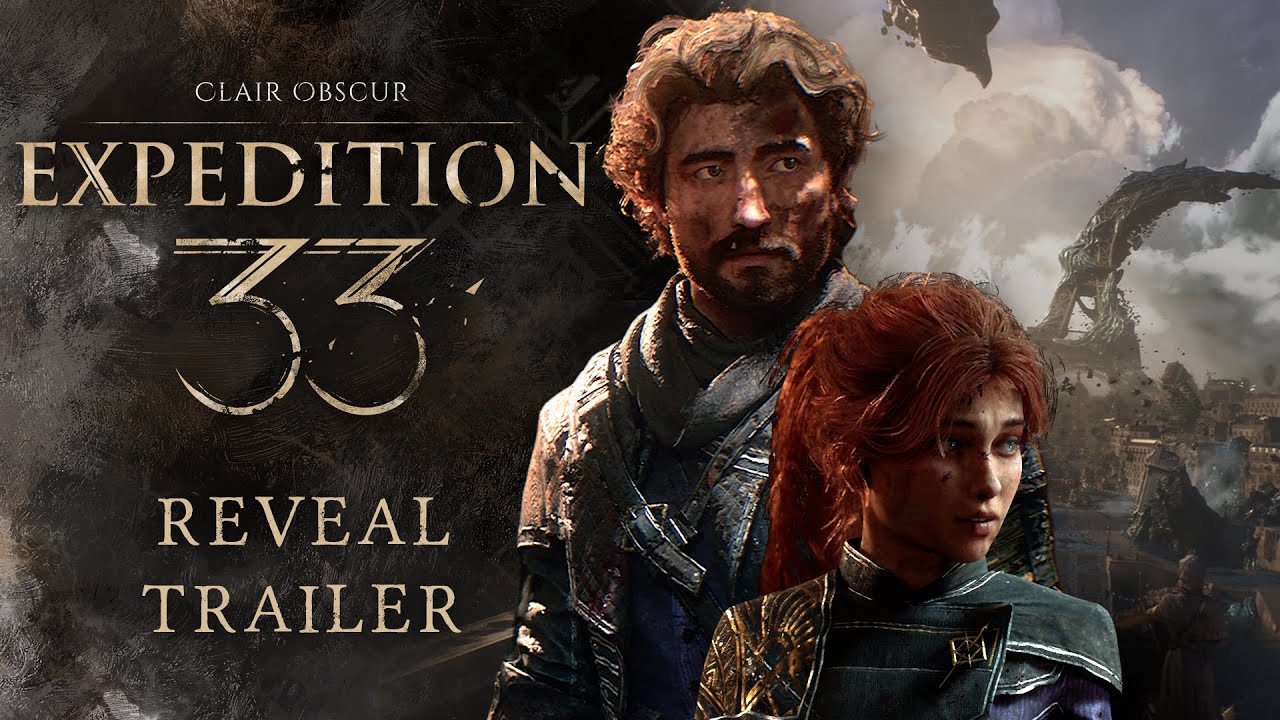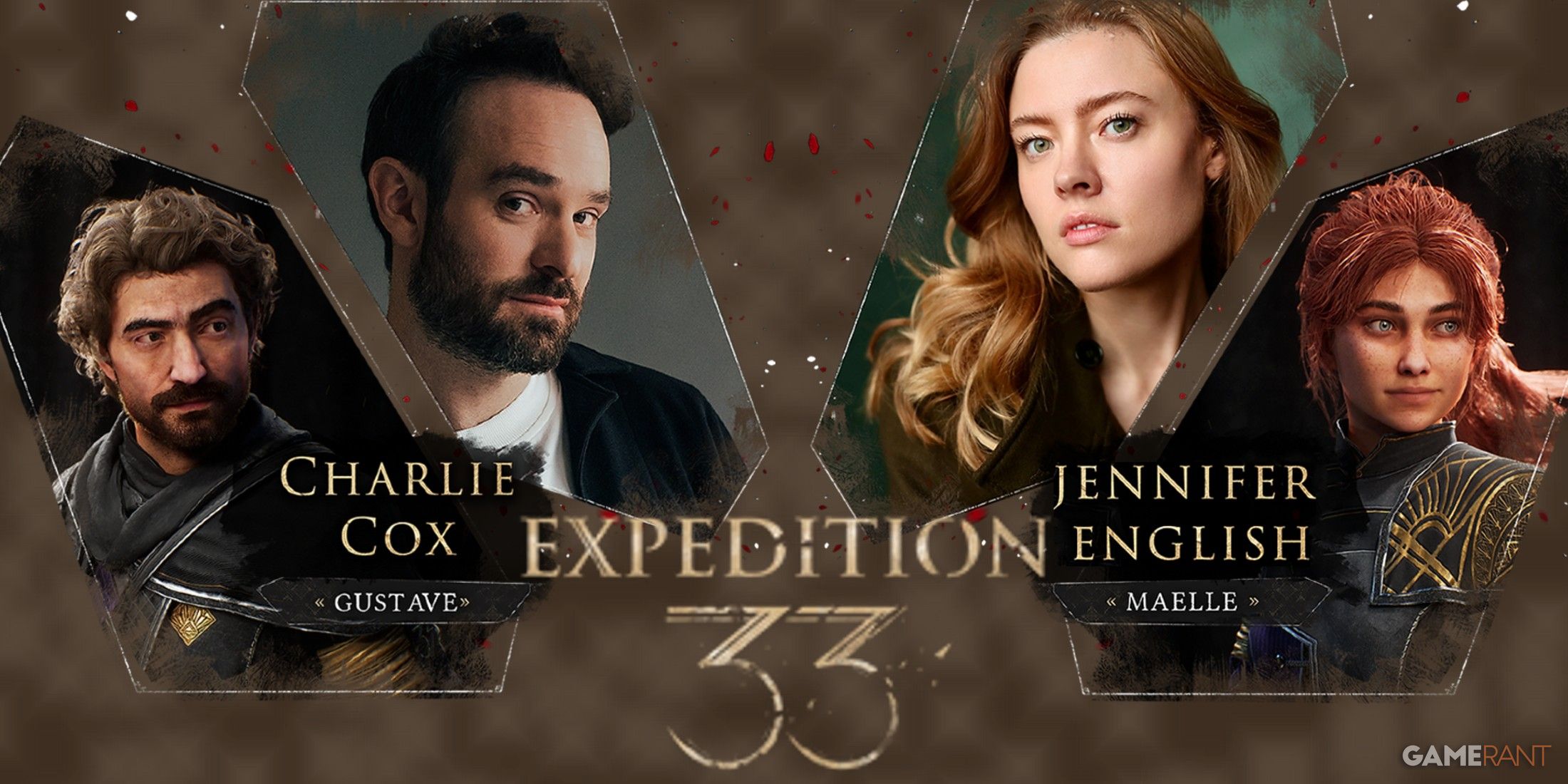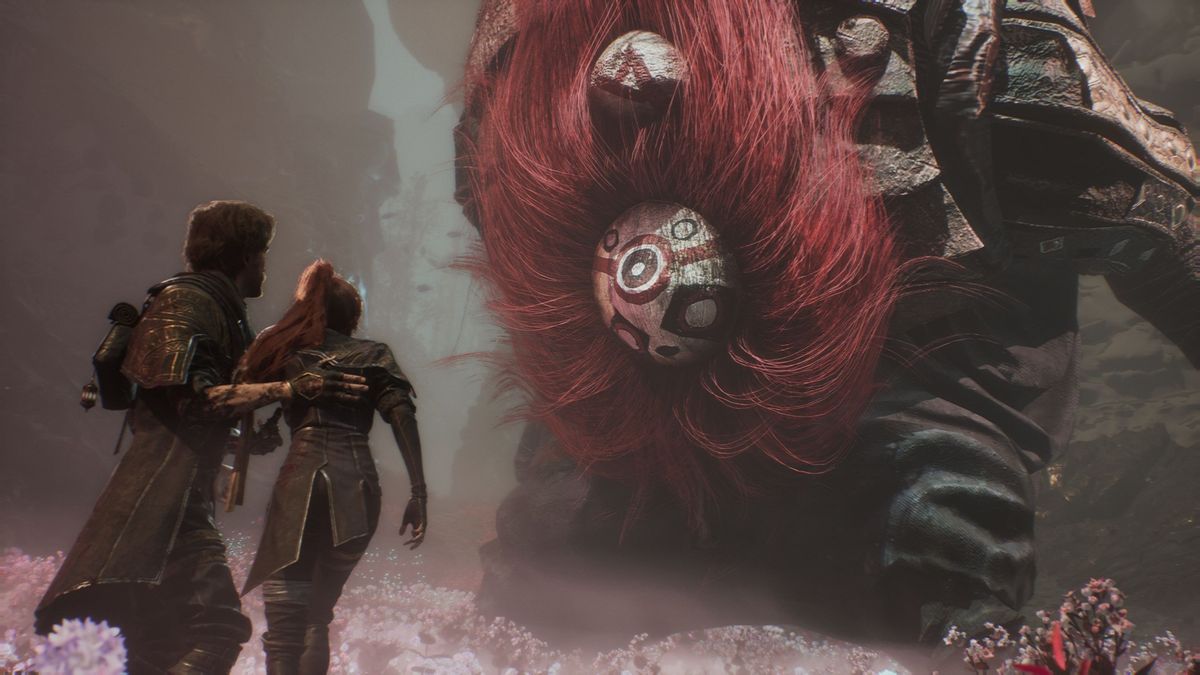On June 9, 2024, during the Summer Game Fest, Clair Obscur Expedition 33 was announced and immediately resonated with an audience, particularly in France, where there was an immediate surge of patriotic sentiment. A bit of nationalism can be beneficial, especially considering it is the first game from Sandfall Interactive, a studio located in Montpellier. The team comprises 30 members (the game’s development involved many more contributors), some of whom are former Ubisoft employees and thus bring significant experience to the project. The goal with Clair Obscur Expedition 33 is clear: to create a French J-RPG that is both contemporary and deeply influenced by its references. The preview indicated substantial potential, notably due to its innovative turn-based combat system and enigmatic atmosphere depicting a fractured Paris trapped in a distorted space-time continuum. Now that the development is complete, it’s time for an in-depth review.
There are games that pique curiosity from their very first images. Clair Obscur Expedition 33 is one such game. Revealed as an aesthetic curiosity upon its unveiling by the Montpellier-based studio, the project occupies a niche between AA and independent blockbuster titles. The title immediately attracted attention due to its enchanting artistic direction, set in an universe on the border of surrealism, situated somewhere between dream and nightmare. In recent years, many dystopian narratives have emerged, but few dare to be as tragically direct. This particular artistic identity is undoubtedly one of the game’s greatest assets, with its fractured environments, metaphysical landscapes, and improbable architectures that evoke the awake dreams of Polish artist Zdzisław Beksiński (pronounced Djisoif Beksinski).
GUSTAVE A FAIL
Discussing Clair Obscur without mentioning its dubbing would be criminally negligent. Whether in French or English, the quality is exceptional. Adeline Chetail, Alexandre Gillet, Céline Melloul, and Bruno Magne deliver haunting performances, perfectly aligned with the game’s sharp dialogue. The staging of dialogues surprises with its fluidity, meaning that characters interrupt each other naturally and respond vivaciously. For those opting for the French version, the language may seem crude. There is a certain form of authenticity that surprises in a good sense. One has never heard so many ‘authentically French’ insults in a video game, and I haven’t counted how many times the word ‘putain’ is used, but initially, it feels strange. On the English side, one finds luminaries such as Charlie Cox, Andy Serkis, and Jennifer English, evidence of the studio’s ambition.
The gameplay features a distinctive approach, as Sandfall Interactive aims to invigorate the traditional Japanese role-playing game (J-RPG) genre. By integrating turn-based strategies with real-time action elements, “Clair Obscur” avoids passivity, which is crucial since this blend convinces skeptics of turn-based systems to engage with it. Unlike many conventional J-RPGs where waiting passively is sufficient, players must react immediately when an enemy attacks to survive. Players have the option to dodge, parry, or jump for defense, but each action requires precise timing that varies based on the type of attack and opponent. This necessitates constant vigilance, which makes Clair Obscur’s combat system particularly engaging. For instance, a perfectly timed parry allows players to counterattack with substantial damage—a highly advantageous move. Similarly, executing attacks efficiently often involves Quick Time Events (QTEs) that maximize damage output; failing these can result in ineffective attacks, especially if the opponent uses special defenses like shields. This integration infuses energy into the turn-based combat system, making it more dynamic and lively.
“A SOULS-LIKE BY TURN’S TURN”
What sets the gameplay of Clair Obscur Expedition 33 apart and makes it more profound and engaging is its action point (AP) system, which players can adjust based on attacks and bonuses that are recoverable in the environment as Pictos and Luminas. Each ability costs between 1 and 9 action points, which can be replenished through various actions such as attacking, parrying, dodging, healing, or even at the start of a turn. Action points are also used to activate character-specific abilities that each have their own evolution tree. For example, Maelle can switch stances depending on the abilities she uses; she can adopt a defensive stance to reduce incoming damage or opt for a virtuoso stance for powerful attacks. Players must strategically alternate between these stances to maximize efficiency while protecting themselves. In contrast, Lune, the mage, accumulates elemental pigments using her abilities, which can then enhance subsequent attacks. Players need to carefully chain their abilities to fully leverage these effects. Overall, each character possesses unique passive abilities that add depth and prevent a straightforward turn-based approach. To progress effectively, players must consider ability chains, side effects, and the elemental weaknesses or resistances of enemies.
The game also introduces a mechanic for targeted attacks. During their turn, players can choose to target an enemy and shoot from a distance using only 1 Action Point, which does not count as a primary action. This allows players to combine targeted attacks with skills in the same turn. Some creatures are vulnerable only to this type of attack, featuring sensitive areas that, when hit, cause significant damage or prevent enemies from using certain abilities. Despite the complexity of these systems, they integrate naturally and smoothly into gameplay once understood. Additionally, Pictos, passive abilities that can be equipped, offer a way to completely change the game by gaining power through combat use. Once improved, their effects can even be shared among different characters with Lumina points, a resource earned from experience or specific items. This depth leads to more strategic gameplay than initially apparent, sometimes requiring careful consideration of team composition, particularly during challenging boss fights.
What is actually more complex and sometimes frustrating is the game’s difficulty. You might have thought you could breeze through it like a simple Final Fantasy? Think again; Clair Obscur is a demanding game, especially in ‘Normal’ mode where mastering its mechanics is crucial to avoid dying quickly. From the start of the adventure, certain enemies can take you down faster than an enraged mime (yes, a mime). But there’s no need to panic: most of these encounters can be avoided and revisited later once your squad has been upgraded and strengthened. And in case of defeat, there’s no traditional game over screen; instead, you are returned to the last respawn point. This isn’t ideal, but it does provide a safety net. Additionally, the game allows players to adjust difficulty at any time, offering better accessibility by expanding timing windows for dodges and blocks. An additional option automates Quick Time Events (QTEs), allowing players to focus fully on combat strategy while enjoying spectacular animations without interruption. The developers have clearly considered everyone’s needs.However, the downside of this complexity is an overloaded interface that can be a bit messy, making navigation through menus laborious, especially with multiple characters to manage. The visual style of the menus is distinctive and striking, but it’s easy to get lost between attribute points, skills, and Pictos. This is clearly one of the game’s dark spots, among others.
NO EXPLORATION, NO THRILL?
Clair Obscur excels in its battles and writing (there are many aspects that would be interesting to discuss, but doing so would reveal plot surprises). However, the game faces some challenges on the exploration front. It follows a relatively linear structure where players progress through closed zones connected by a central hub. Despite this linearity, each biome offers secrets, optional bosses, and rare items to discover. Nonetheless, certain areas give the impression of lacking creativity or genuine thought in their design. What we anticipated during our preview is confirmed upon further play: exploration in Clair Obscur evokes a sense of disappointment. Although it initially appears promising and conducive to wonder, it ultimately lacks engaging interest. Certainly, collectible items punctuate the journey, and their usefulness is undeniably valuable, but the limited variety of these elements contributes to a sense of monotony and repetition that diminishes this aspect of exploration.
CRITICAL ANALYSIS:Clair Obscur Expedition 33, developed by Montpellier-based Sandfall Interactive, is a highly anticipated French J-RPG. The game was announced on June 9, 2024, during Summer Game Fest, and immediately garnered attention due to its unique blend of contemporary elements and classic J-RPG influences. With a team of 30 members, including former Ubisoft employees, the game boasts exceptional dubbing in both French and English, featuring renowned actors like Charlie Cox, Andy Serkis, and Jennifer English. Clair Obscur Expedition 33 introduces a dynamic combat system that merges turn-based and real-time action. Players must actively respond to enemy attacks for survival, with precise timing required for actions such as dodging, parrying, and counterattacks. The game’s Action Point (AP) system further enhances strategic gameplay by allowing players to alternate between stances and character-specific abilities. Targeted attacks add another layer of complexity, with some enemies being vulnerable only to distant shots.Despite its engaging combat mechanics, Clair Obscur Expedition 33 faces criticism for its challenging difficulty level, which may be off-putting for casual players. The game’s interface is also considered cluttered and difficult to navigate, especially when managing multiple characters. While the exploration aspect of Clair Obscur Expedition 33 is relatively linear and lacks ingenuity in its level design, it offers optional bosses and rare items for collectors. The game’s visual identity, drawing inspiration from surrealism and Polish artist Zdzisław Beksiński, remains one of its greatest assets.Overall, Clair Obscur Expedition 33 is a unique J-RPG that combines captivating art direction with an innovative combat system, though it struggles somewhat with interface complexity and exploration depth.
Clair Obscur Expedition 33, announced by French studio Sandfall Interactive during Summer Game Fest on June 9, 2024, is a highly anticipated Japanese Role-Playing Game (J-RPG) that has generated significant national pride in France. The 30-member team, with roots from Ubisoft, aims to create a contemporary yet nostalgic French J-RPG.**Key Features:**1. **Artistic Direction**: Clair Obscur stands out for its unique and surreal art style, drawing comparisons to the works of Polish artist Zdzisław Beksiński, featuring fractured environments and metaphysical landscapes. 2. **Dubbing Quality**: The game offers exceptional voice acting in both French and English, with notable talents like Charlie Cox, Andy Serkis, and Jennifer English lending their voices. The dialogue is sharp and authentic, especially in the French version, incorporating ‘authentically French’ language.3. **Combat System**: Breaking from traditional J-RPGs, Clair Obscur combines turn-based and real-time action, requiring constant player engagement. Players can dodge, parry, or jump to defend against attacks, each with precise timing for maximum effectiveness. Successful actions reward players with immediate counterattacks or enhanced damage.4. **Action Point System**: A core mechanic allowing for strategic depth by balancing offensive and defensive actions. Characters can switch between stances (defensive or virtuoso) and utilize elemental pigments for powerful attacks, encouraging a mix of tactics and character development.5. **Targeted Attacks**: Players can target enemy vulnerabilities from a distance for added strategic options, further enhancing the combat system’s complexity.6. **Difficulty and Accessibility**: While challenging, especially in ‘Normal’ mode, players can adjust difficulty settings to ease timing windows for dodges and blocks or automate Quick Time Events (QTEs). However, this accessibility comes at the cost of a somewhat cluttered interface with multiple menus that may be confusing.7. **Exploration**: The game follows a relatively linear path, connecting zones via a central hub, though it offers secrets, optional bosses, and rare items. Despite initial promise, exploration feels somewhat monotonous due to limited diversity in collectibles and level design ingenuity.**Overall Analysis:**Clair Obscur Expedition 33 is a bold attempt at revitalizing the J-RPG genre with its unique French identity, compelling narrative, deep combat mechanics, and distinctive art direction. While it excels in its battles and storytelling, the game faces criticism for somewhat disappointing exploration depth and a complex yet potentially overwhelming interface. Nonetheless, Sandfall Interactive’s ambitious project marks an intriguing entry in the RPG landscape, pushing boundaries with its blend of traditional and modern elements.
Clair Obscur is a game that stands out for its combat system and narrative, combining turn-based battles with an engaging storyline. The game presents a significant challenge, necessitating players to master its mechanics to prevent quick losses. However, the exploration component is somewhat underwhelming due to its linear design and lack of compelling level layout. During combat scenes, the visuals are noteworthy; however, character animations during exploration appear rigid, and non-playable characters (NPCs) seem lifeless owing to limited animation cycles. Despite these limitations, Clair Obscur showcases the potential of its Montpellier-based developer, suggesting room for enhancement with increased financial resources.
Clair Obscur is distinguished by its combat system and narrative, combining turn-based battles with an engaging storyline. The game’s challenge necessitates players mastering its mechanics to prevent quick setbacks. However, the exploration aspect falls short due to its linear design and uninteresting level layout. Despite some technical limitations and occasional stiff character animations in non-combat scenes, Clair Obscur shines with its intricate gameplay mechanics, stunning art style, and compelling narrative. Budget constraints are noticeable in certain areas, but overall, it provides a unique experience for fans of traditional JRPGs with modern elements.
Have any thoughts?
Share your reaction or leave a quick response — we’d love to hear what you think!



